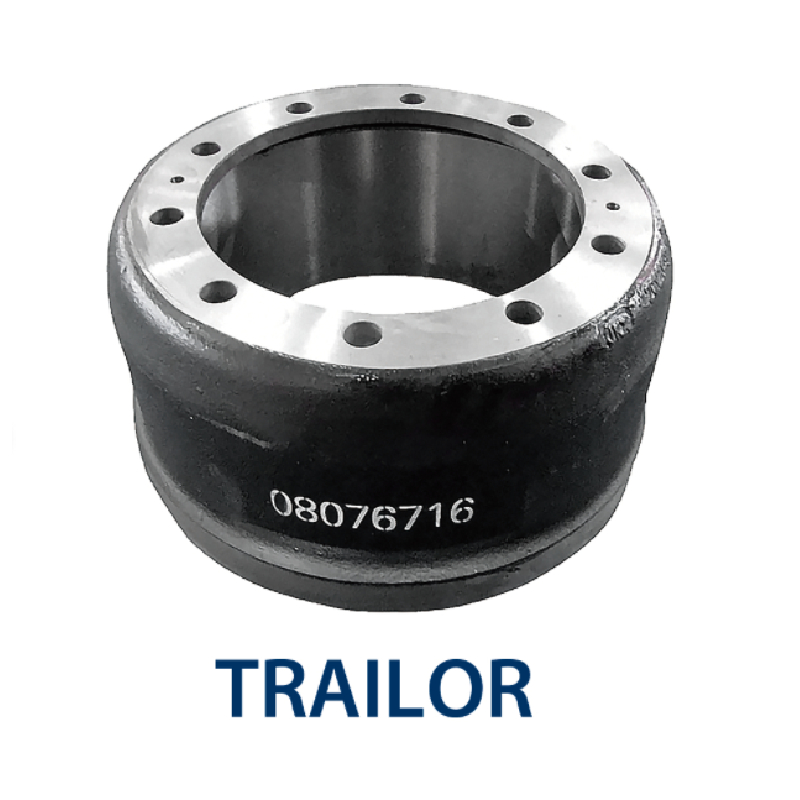Dec . 09, 2024 14:23 Back to list
what does a brake drum look like
Understanding Brake Drums What Do They Look Like?
When it comes to automotive braking systems, many people are familiar with disc brakes, which are commonly found on modern vehicles. However, brake drums also play a critical role in the braking system of many cars, trucks, and motorcycles. If you’ve ever wondered what a brake drum looks like, as well as how it functions and its importance in vehicle safety, this article is for you.
The Structure of a Brake Drum
A brake drum is a cylindrical component, usually made from cast iron or aluminum, that is located at the rear wheels of vehicles equipped with drum brakes. Its shape is similar to that of a large donut or barrel, with a hollow center that fits around the wheel hub. The outer surface of the drum is typically smooth and may feature ventilation holes or a series of fins to help dissipate heat generated during braking.
Inside the drum, you'll find brake shoes, which are curved pieces of friction material. When the driver presses the brake pedal, hydraulic fluid is sent to the brake cylinders located at the top of the drum. This action forces the brake shoes outward against the inner surface of the drum, effectively slowing down or stopping the vehicle.
Visual Characteristics
When you look at a brake drum, the most noticeable aspect is its rugged and sturdy appearance, designed to withstand high temperatures and significant forces. The diameter and thickness of the drum can vary, depending on the specifications of the vehicle. For instance, larger vehicles such as trucks may have oversized drums compared to sedans.
The finish of a brake drum can vary from a shiny, polished surface to a more rugged, matte appearance, depending on wear and tear from usage. Over time, it’s common for brake drums to develop grooves or scoring due to the constant friction between the brake shoes and the drum surface. When examining a brake drum, you might also notice differences in coloration, where heat has caused changes in the material properties of the drum.
what does a brake drum look like

Function and Importance
The brake drum plays a crucial role in the overall braking system, particularly in terms of performance and safety. The friction between the brake shoes and the drum generates the force needed to slow down or stop the vehicle. This operation must be effective at various speeds and under different driving conditions, making the design of the brake drum vital.
One of the advantages of drum brakes is their ability to generate a considerable amount of braking force with less required pedal pressure, which can be beneficial in heavy vehicles. Additionally, drum brakes generally provide greater effectiveness when it comes to holding a vehicle stationary, making them an ideal choice for the rear brakes of many cars.
Maintenance and Inspection
Routine maintenance is essential for ensuring that brake drums function effectively. Mechanics often recommend periodic inspection of the brake drums for signs of wear, such as excessive grooving, cracks, or warping. If any of these issues are present, replacing the drum is necessary to maintain the safety and performance of the braking system.
During the inspection, the brake shoes are also checked for proper alignment and wear. If the shoes are worn down significantly, they need to be replaced to prevent damaging the drum further.
Conclusion
In conclusion, the brake drum may not be the most glamorous component of a vehicle, but it plays a vital role in ensuring safety and performance on the road. Understanding what a brake drum looks like and how it functions can provide valuable insights into vehicle maintenance and the importance of a well-functioning braking system. With proper care and inspection, brake drums can offer reliable performance, ensuring that vehicles remain safe for drivers and passengers alike. So, the next time you think about your car’s brakes, remember the significance of that often-overlooked cylindrical piece – the brake drum.
-
Your Brake Drum Man: Premium & Reliable Brake Drums for Sale
NewsAug.18,2025
-
ROR Web Development: Build Fast, Scalable, Secure Apps
NewsAug.17,2025
-
Scania Brake Drums: OEM Quality for Optimal Safety & Durability
NewsAug.16,2025
-
R.V.I: Advanced Remote Visual Inspection for Precision
NewsAug.15,2025
-
Discover HYUNDA: Innovative Vehicles, Equipment & Solutions
NewsAug.14,2025
-
R.V.I: Unlock Advanced Insights & Real-time Performance
NewsAug.13,2025
